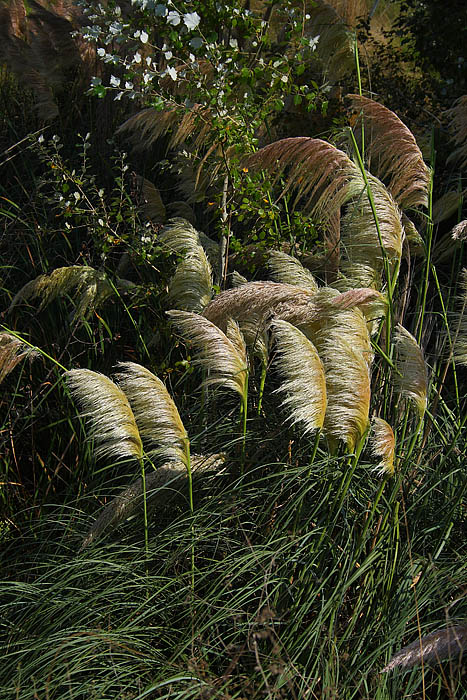There's something very romantic about the grass undulating, swaying, and blowing in the wind.
Ammophila (synonymous with Psamma P. Beauv.) is a genus consisting of two or three very similar species of grasses: Marram Grass, Bent Grass, and European Beachgrass.
Ammophila arenaria grows in the coastal zones of Europe and North Africa, and is the dominant species on sand dunes where it is responsible for stabilising and building the foredune by capturing blown sand and binding it together with the warp and weft of its tough, fibrous rhizome system which can grow laterally by 2 meters (7 feet) in six months. One clump can produce 100 new shoots annually.
 |
| Mediterranean dune vegetation. Ammophila arenaria, Pancratium maritimum, Carpobrotus chilensis. (© LightColourShade. All rights reserved) |
 |
| Mediterranean dune grassland. Ammophila arenaria, Pancratium maritimum, Carpobrotus chilensis. (© LightColourShade. All rights reserved) |
 |
| On the bank of a lake. (© LightColourShade. All rights reserved) |
Cortaderia selloana, commonly known as pampas grass, is a tall grass native to southern South America, including the pampas after which it is named, and Patagonia.
 |
| Cortaderia selloana (Pampas grass) curtain (© LightColourShade. All rights reserved) |
+in+the+forest.jpg) |
| Cortaderia selloana (Pampas grass) in the forest (© LightColourShade. All rights reserved) |
 |
| Reeds in the wind. (© LightColourShade. All rights reserved) |
No comments:
Post a Comment
Speak out, I'm listening.